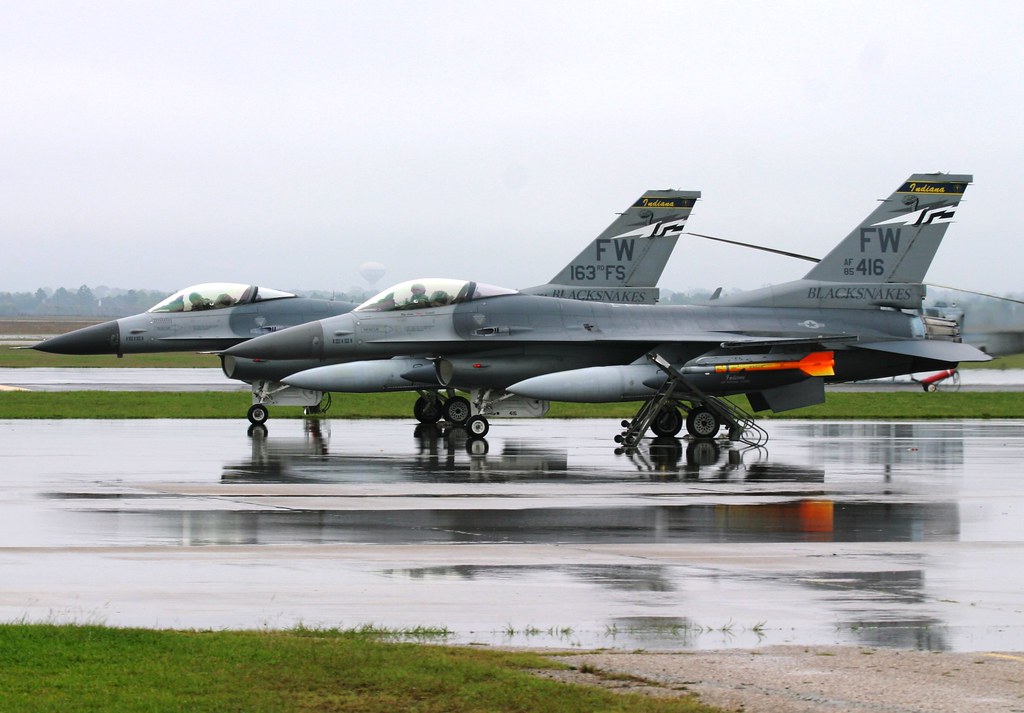
A recently surfaced image has unveiled a rare glimpse into the armament configuration of the Israeli Air Force’s F-16 C/I Fighting Falcon. The photograph showcases a distinctive array of weaponry strategically placed on the aircraft’s wings and fuselage.
Detailed examination of the photo reveals the specific armaments on the F-16. GBU-31 JDAMs are positioned on Stations 3, 4, 6, and 7 under the wings, while dual Python-4/5s are affixed to Stations 2 and 8. Additionally, Stations 1 and 9 carry two AIM-120C-series AMRAAMs each, and Station 5 accommodates a 300-gallon drop tank, enhancing the jet’s overall combat capabilities.
In the realm of military aviation, encountering a fully loaded fighter jet is an uncommon sight, especially one as formidable as the F-16 C/I Fighting Falcon. Although the timing of the photograph remains uncertain, the extensive armament suggests that it was likely taken just before the aircraft undertook airstrikes in Gaza during the conflicts initiated on October 7.
While Israeli jets are occasionally armed for exercises, witnessing them fully equipped for combat is a rarity. Hence, it can be inferred that the photo captures the moment just before the F-16 embarked on an authentic combat mission. Notably, the JDAM munitions showcased in the image have gained prominence in the Russia-Ukraine conflict, where the Russian Aerospace Forces have increasingly deployed their counterpart, the KAB (adjustable aerial bombs), owing to their abundant supply.
JDAMs represent a sophisticated solution to the challenge of using gravity bombs in the face of advanced air defense systems and dynamic military contexts. This munitions kit transforms unguided bombs into precision-guided projectiles with navigation and wings, significantly extending their operational range. Major arms manufacturers, including Russia, the USA, and Israel, have recognized the strategic value of this technology.
The F-16 C/I, also known as the F-16C Block 50/52, stands as an upgraded iteration of the standard F-16C, designed to enhance its capabilities in both air-to-air and air-to-surface missions. Equipped with the AN/APG-68[V]9 advanced radar system, the F-16 C/I boasts an extended range, higher resolution, and the capacity to track multiple targets simultaneously compared to the radar system found in the standard F-16C.
The enhanced F-16 C/I is equipped with an upgraded engine, depending on the block, either the General Electric F110-GE-129 or the Pratt & Whitney F100-PW-229. These advanced engines deliver increased thrust, thereby enhancing the aircraft’s speed, maneuverability, and overall performance. In contrast, the standard F-16C is outfitted with the Pratt & Whitney F100-PW-200 or the General Electric F110-GE-100 engines.
Another notable distinction lies in the avionics and weapon systems of the F-16 C/I. It boasts advanced avionics designed for superior navigation and target acquisition, featuring a modular mission computer that enhances its combat capabilities. The aircraft also incorporates an expanded weapons package, including advanced air-to-air, air-to-surface, and anti-ship missiles, providing it with a broader spectrum of operational capabilities.
Adding to its capabilities, the F-16 C/I is equipped with a Conformal Fuel Tank [CFT] capability, involving additional fuel tanks fitted to the aircraft’s body. This feature allows for increased range and endurance without compromising aerodynamic performance. In contrast, the standard F-16C lacks this specific capability.




